Thailand celebrates its cultural festivals across its national regions throughout the complete yearly calendar. The festivals in Thailand express cultural beliefs between Buddhism and local heritage and natural events throughout the year. Asalha Puja and Visakha Bucha represent peaceful spiritual events, while Songkran and the Phi Ta Khon Festival bring high energy and excitement to the celebrations. Most occasions in Thailand follow the lunar cycle, and each event carries unique tales about its origins. Traditional activities at this location include colourful parades and spiritual rituals together with local music performances and dance routines and urban floods with water projectiles.
Top 10 Festivals In Thailand
These cultural and festive events in Thailand unite local communities and draw visitors who wish to understand Thai traditions. Here is the list of the top festivals in Thailand:
1. Loy Krathong Festival
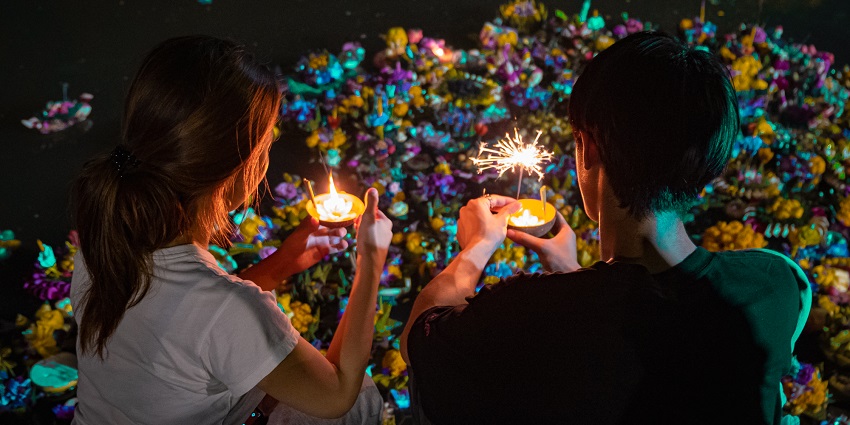
Photo: Rockybgonzales / Wikimedia Commons
Loy Krathong is one of the most famous festivals in Thailand. It takes place every year on the full moon night of the 12th lunar month, usually in November. People gather around rivers, lakes, and ponds to float small decorated baskets called krathongs. These baskets are made from banana leaves and filled with flowers, candles, and incense sticks. Floating a krathong is a way to say thank you to the water goddess and let go of bad luck and mistakes from the past year. There are also dance shows, fireworks, and contests during the festival.
Location: All over Thailand, especially in Sukhothai, Chiang Mai, and Bangkok
Major Attractions: Floating krathongs, traditional dances, fireworks, and temple activities
2. Yi Peng Lantern Festival
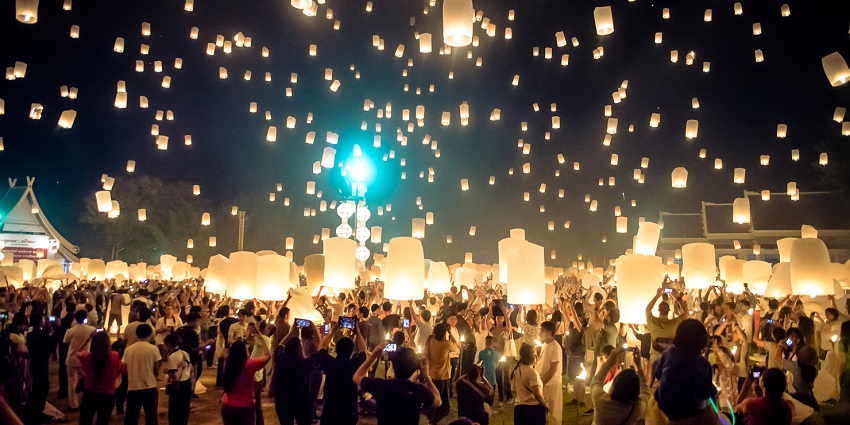
Photo: Carlos Adampol Galindo / Wikimedia Commons
The Yi Peng is a beautiful festival that is mainly celebrated in Chiang Mai, northern Thailand in November. The most special part of Yi Peng is the releasing of paper lanterns called khom loi into the sky. People say that these lanterns float gently with a small candle inside and carry away bad luck, and bring good fortune. In addition, locals also decorate their homes and temples with colourful lanterns. There are parades, cultural shows and traditional music. People dress in northern Thai (Lanna) clothing and visit the temples for blessings.
Location: Chiang Mai, Northern Thailand
Major Attractions: Sky lantern release, lantern decorations, traditional parades, and temple visits
3. Visakha Bucha / Vesak
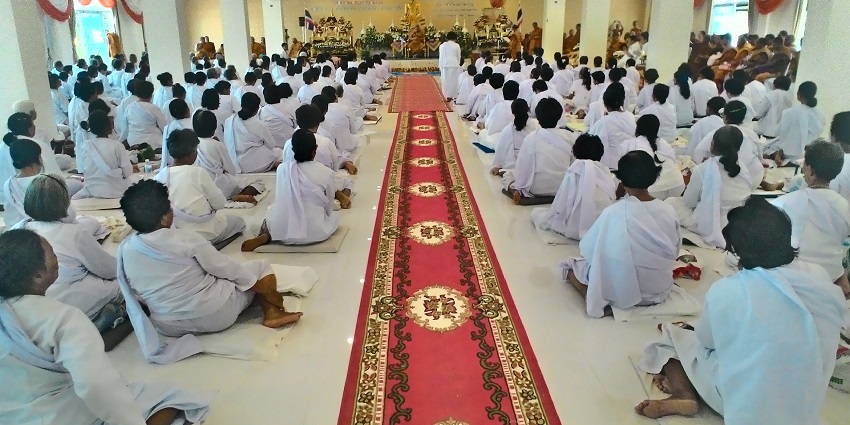
Photo: Ya tonavanik / Wikimedia Commons
Vesak, also known as Visakha Bucha, is a very important Buddhist day in Thailand. It occurs on the full moon of the sixth lunar month in May. This day honours three big events in the life of Buddha: his birth, his enlightenment, and his death. Thai people worship at temples, listen to teachings and take part in candlelight processions called wian on this day. With their hands filled with candles, flowers and incense, they walk around the temple three times. It is a peaceful and spiritual day.
Location: Across Thailand, especially in major temples like those in Bangkok and Nakhon Pathom
Major Attractions: Temple visits, candlelight walks, giving alms, and meditation
4. Asalha Puja / Asalha Bucha
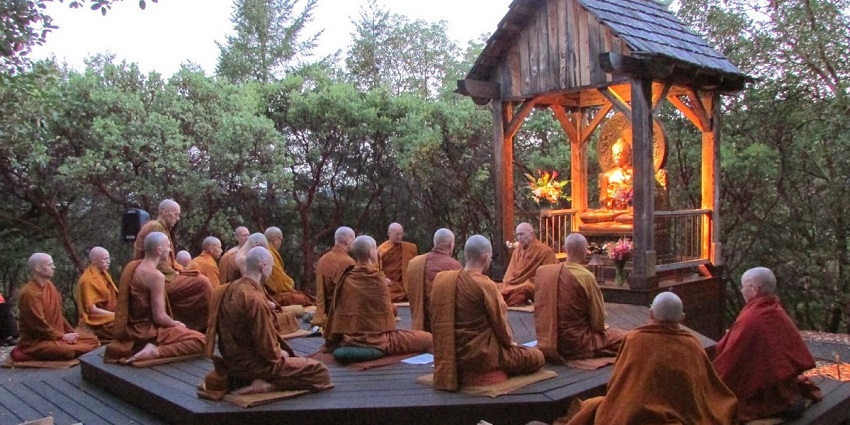
Photo: Brcar / Wikimedia Commons
Asalha Puja is one of the important festivals in Thailand. It is held on the full moon of the eighth lunar month, usually in July. This day remembers the first time the Buddha gave a teaching to his first five followers over 2,500 years ago. That teaching explained the Four Noble Truths, which are the basic ideas of Buddhism. On this day, Thai people go to temples to offer food to monks, listen to Buddhist teachings, and walk around the temple with candles. Asalha Puja is peaceful and usually comes a day before the start of Buddhist Lent.
Location: Celebrated all over Thailand, especially in temples in Bangkok and northern areas
Major Attractions: Candlelight walks, Buddhist teachings, temple offerings
5. Khao Phansa Day
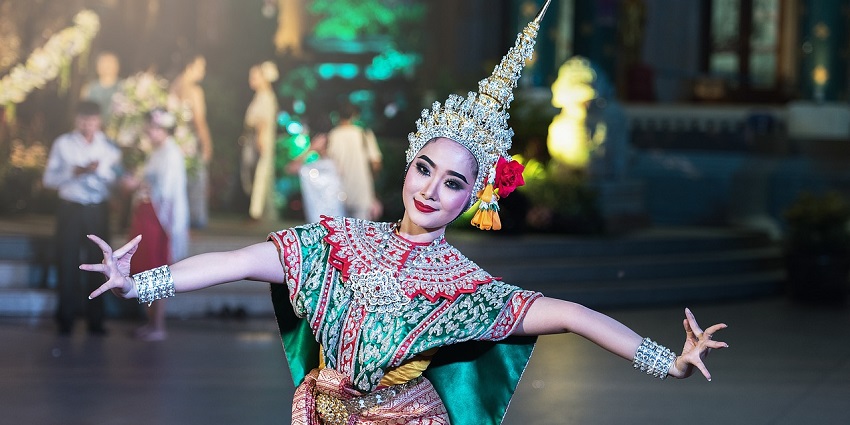
Photo: sasint / Pexels / Image For Representation Only
Khao Phansa Day is the start of Buddhist Lent. This usually occurs the day after Asalha Puja, which is in July. On this day, monks start a three-month stay in their temples in the rainy season. At this time, they study and meditate without travelling. They also receive support from people who give them candles, robes and other supplies. Many Thai people also try to improve themselves by giving up alcohol, smoking, or eating meat during this time. In some villages, young men join temples as monks for the season.
Location: Celebrated across Thailand, with special traditions in the northeast
Major Attractions: Giving candles and robes to monks, temple visits, personal vows
6. Ubon Ratchathani Candle Festival
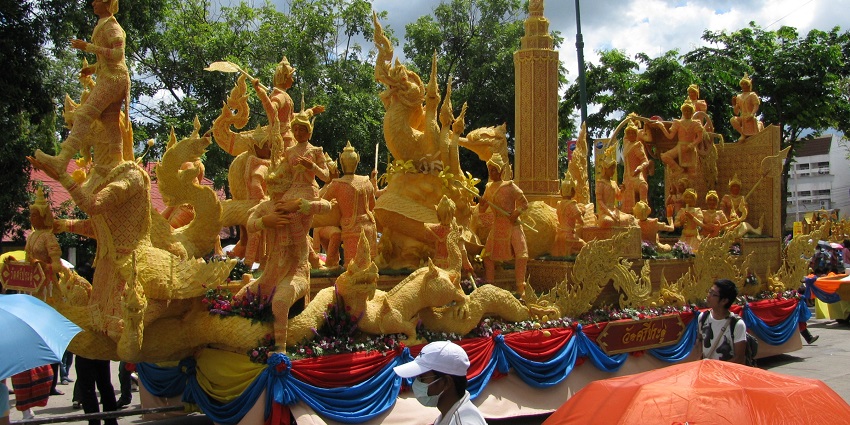
Photo: Plenz / Wikimedia Commons
The Ubon Ratchathani Candle Festival is held in July in northeast Thailand. Bigger candles are made from beeswax, which is then carved to make drawings of Buddhist and Hindu stories. They are placed on large floats and shown in big parades. The floats are joined by dancers, music and people in traditional clothes. Temple candles are finished by local artists and temples for weeks. There is also a contest to see who has the most beautiful candle. Ubon Ratchathani draws art lovers and has been considered one of the most colourful festivals that shows Thai culture, faith and talent.
Location: Ubon Ratchathani, Northeastern Thailand
Major Attractions: Giant carved candle parade, local music and dance, traditional clothing
7. Phi Ta Khon / Ghost Festival
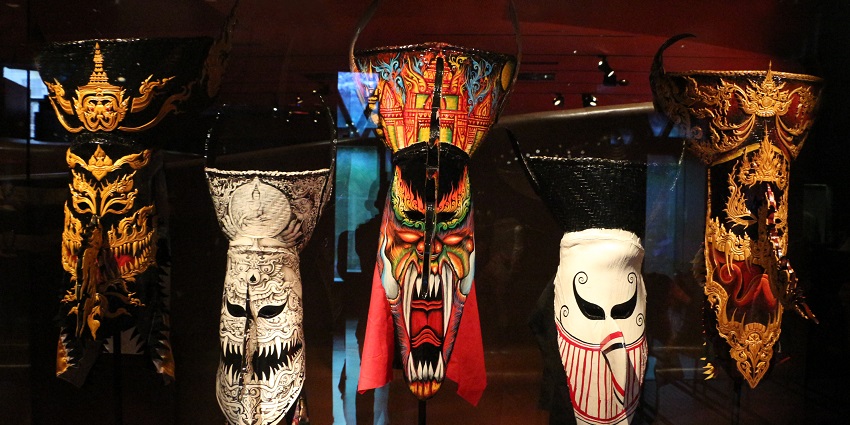
Photo: Sailko / Wikimedia Commons / Image For Representation Only
Phi Ta Khon is a fun and unusual event held in Dan Sai, Loei Province, in northeastern Thailand. It serves as a greater spiritual celebration, which includes the event that generally happens in June or July. The special element of this celebration stems from the vibrant ghost costumes together with the towering masks crafted from coconut husks. Participating locals transform into congenial spirit representations to perform musical dance processes and loud performances throughout street parades. A Buddhist narrative serves as inspiration behind this event which tells about spirits becoming active for a shared trip.
Location: Dan Sai District, Loei Province
Major Attractions: Ghost mask parades, traditional dancing, music, and temple rituals
8. Boon Bang Fai / Rocket Festival
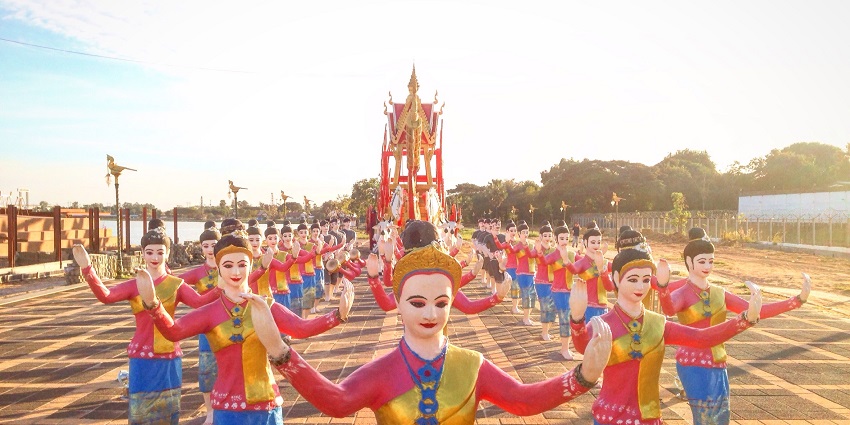
Photo: Ananyut Maneechan / Wikimedia Commons
The Boon Bang Fai Rocket Festival is celebrated in northeastern Thailand, especially in Yasothon, usually on the second weekend of May. It is an ancient festival of merit-making, with homemade rockets launched into the sky to attract rain, the start of the wet season and a good harvest. Parades featuring traditional dances and music, and launching rockets that can soar to impressive heights, to be competitive. Ancient beliefs are mixed with festive fun; the community’s creativity and cultural pride are on display at the festival.
Location: Yasothon and other provinces in northeastern Thailand
Major Attractions: Rocket launches, folk dance parades, traditional costumes, music performances
9. Chinese New Year
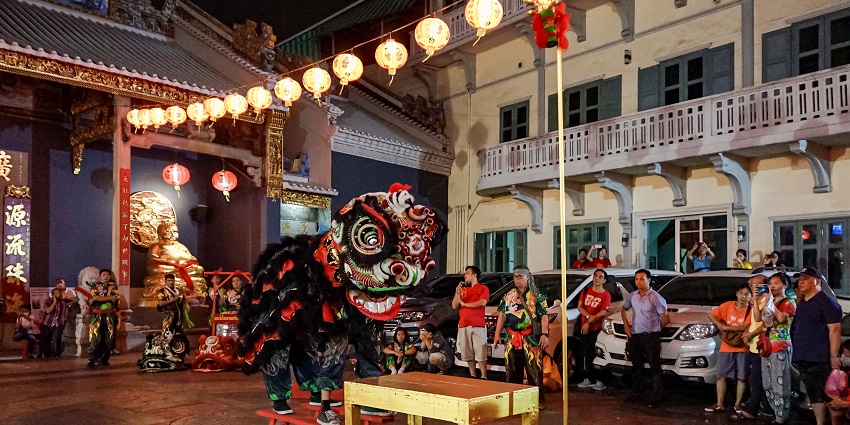
Photo: Nina R / Wikimedia Commons
Chinese New Year is a major celebration in Thailand, especially in places with large Chinese-Thai communities like Bangkok’s Chinatown (Yaowarat). It happens each year in January or February, depending on the lunar calendar. The festival marks the start of the Chinese lunar year and is filled with prayers, fireworks, and red decorations. Families clean their homes to sweep away bad luck, visit temples to pray, and gather for big meals with dishes like fish and dumplings. Lion and dragon dances fill the streets, and people give red envelopes with money to children for good luck.
Location: Bangkok (Yaowarat), Nakhon Sawan, and other major cities
Major Attractions: Lion and dragon dances, temple visits, fireworks, traditional foods
10. Songkran Festival
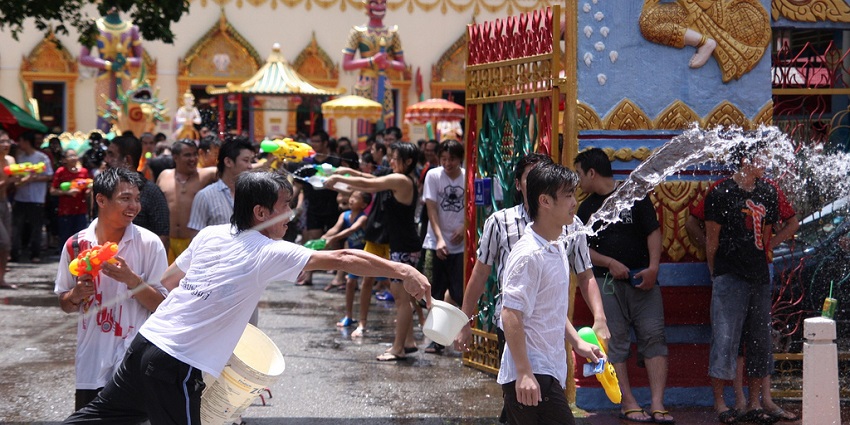
Photo: Jan / Wikimedia Commons
Thailand’s New Year celebration is called Songkran, and it is celebrated from April 13th to April 15th each year. In the past, people have poured water gently over elders’ hands and Buddha statues to show respect. In places like Chiang Mai and Bangkok, the streets turn into water-filled battle zones with water guns, buckets, and hoses. People splash each other in the hot summer weather. Songkran is one of the biggest cultural festivals in Thailand, with deep meaning and endless fun. It’s also a time for cleaning homes, dressing in Thai clothes, and building sand pagodas at temples.
Location: Celebrated all over Thailand, especially lively in Chiang Mai, Bangkok, and Pattaya
Major Attractions: Water fights, temple visits, sand pagodas, traditional blessings
Festivals in Thailand are a colourful celebration of its glorious culture, spiritual traditions and artistic heritage. Every festival has its own unique charm and unforgettable experiences, with water fights in Songkran and mesmerising lanterns of Yi Peng being examples. Plan your travel with TripXL and dive into Thailand’s glory of art and colour and experience culture in every moment. The magic of Thailand’s festival should inspire your adventure!
Cover Photo: GoToVan / Wikimedia Commons


 WhatsApp
WhatsApp
 Twitter
Twitter









